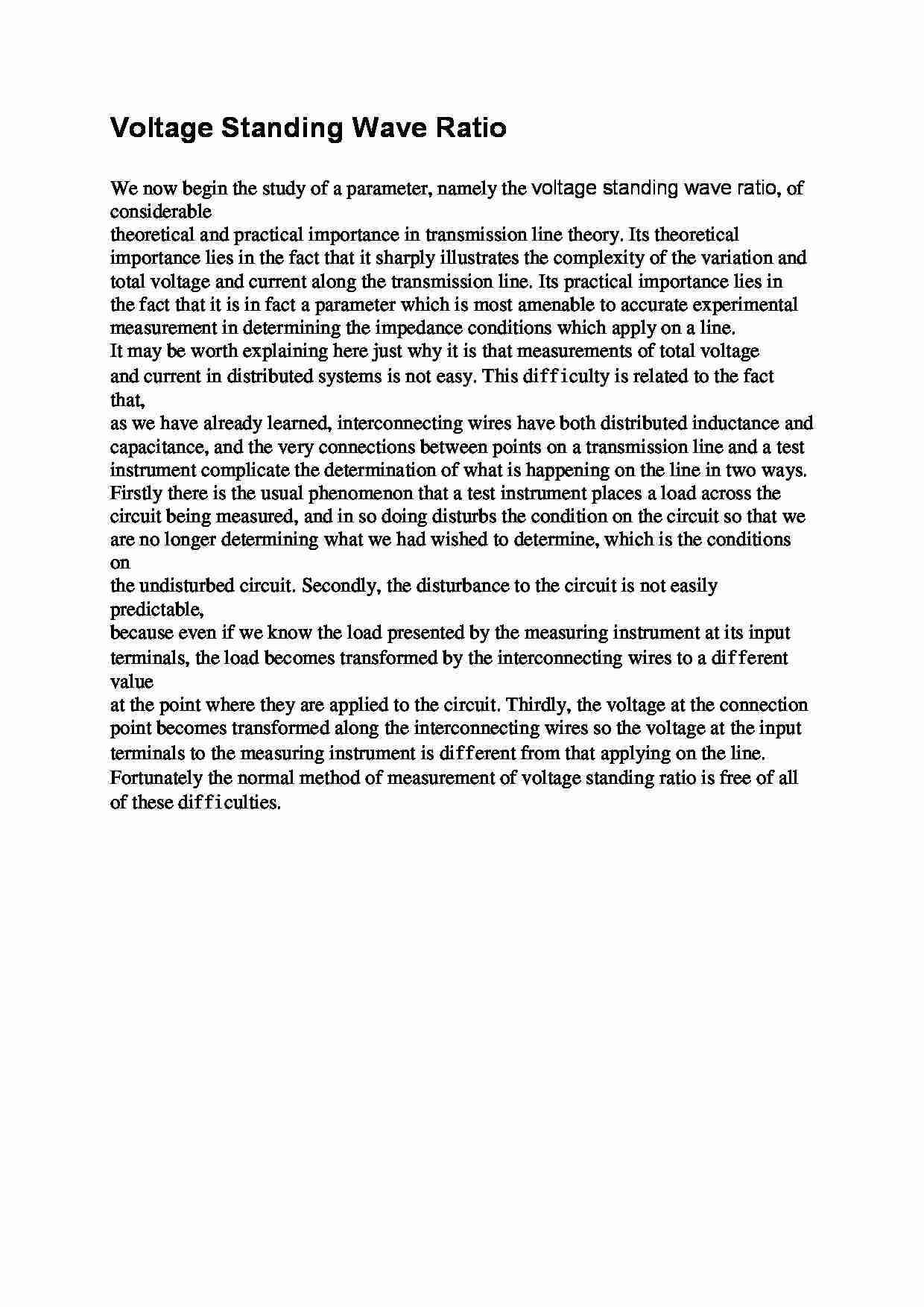
Voltage Standing Wave Ratio We now begin the study of a parameter, namely the voltage standing wave ratio, of considerable
theoretical and practical importance in transmission line theory. Its theoretical
importance lies in the fact that it sharply illustrates the complexity of the variation and
total voltage and current along the transmission line. Its practical importance lies in
the fact that it is in fact a parameter which is most amenable to accurate experimental
measurement in determining the impedance conditions which apply on a line.
It may be worth explaining here just why it is that measurements of total voltage
and current in distributed systems is not easy. This difficulty is related to the fact that,
as we have already learned, interconnecting wires have both distributed inductance and
capacitance, and the very connections between points on a transmission line and a test
instrument complicate the determination of what is happening on the line in two ways.
Firstly there is the usual phenomenon that a test instrument places a load across the
circuit being measured, and in so doing disturbs the condition on the circuit so that we
are no longer determining what we had wished to determine, which is the conditions on
the undisturbed circuit. Secondly, the disturbance to the circuit is not easily predictable,
because even if we know the load presented by the measuring instrument at its input
terminals, the load becomes transformed by the interconnecting wires to a different value
at the point where they are applied to the circuit. Thirdly, the voltage at the connection
point becomes transformed along the interconnecting wires so the voltage at the input
terminals to the measuring instrument is different from that applying on the line.
Fortunately the normal method of measurement of voltage standing ratio is free of all
of these difficulties.
... zobacz całą notatkę



Komentarze użytkowników (0)